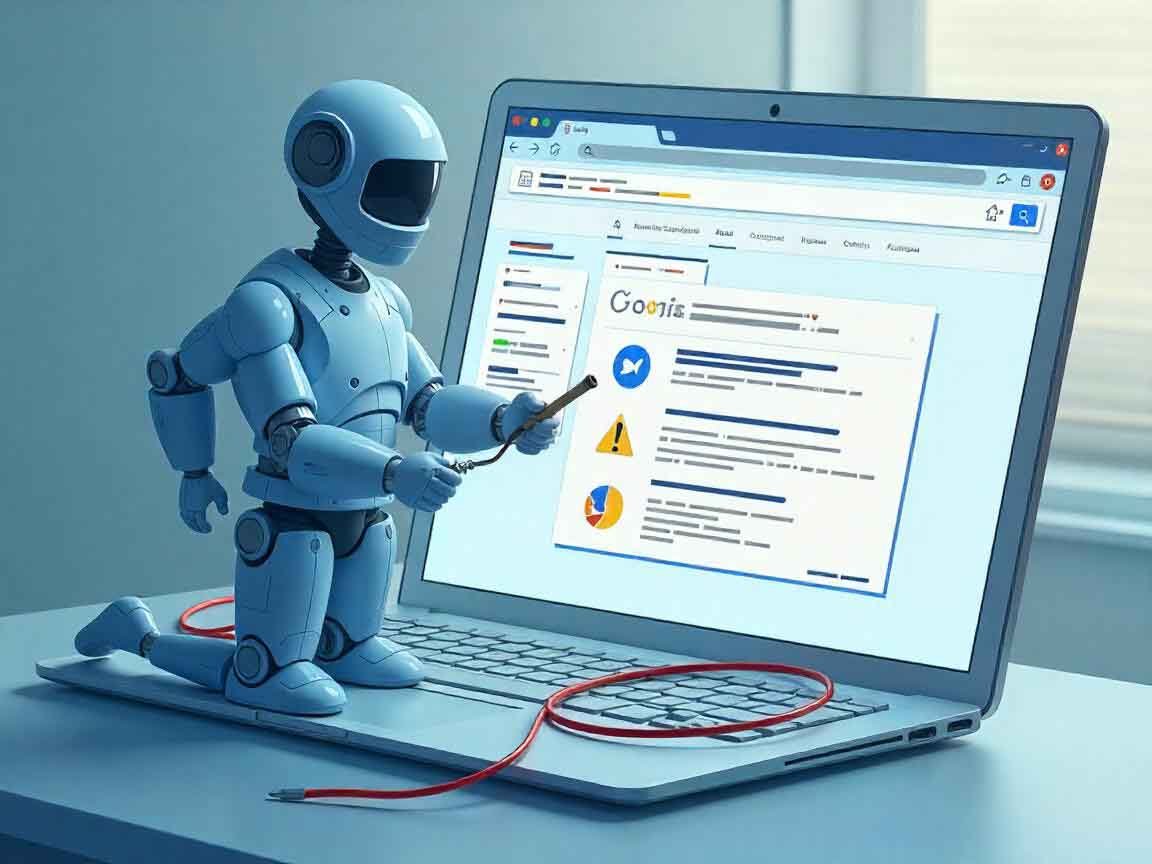Many businesses have been transformed by artificial intelligence (AI), and content creation is no different. From automated writing tools to cutting-edge AI models like ChatGPT, the use of AI to create content has grown even more common. Despite this, many content authors, SEO consultants, and digital marketers remain curious. Does Google penalize AI content? Understanding how search engines, particularly Google, view and rank this kind of information becomes increasingly important as artificial intelligence-generated content is more prevalent.
We will discuss Google’s position on artificial intelligence content, how AI content is identified, and offer practical advice for producing material following Google’s policies using AI tools.
Table of Contents
ToggleCan Google Detect AI Content?
Google’s search engine is meant to evaluate material’s validity, quality, and relevancy. Although the search engine itself does not specifically punish material produced by artificial intelligence, it does give value, originality, and development for human users top priority over ranking concerns. This stage is when the uncertainty starts: Is information produced by artificial intelligence detectable to Google?
The problem of artificial intelligence content detection is multifarious. Although Google does not have a specific algorithm that detects AI material, its systems can identify trends usually connected with language produced by artificial intelligence. AI-generated material, for instance, might be less deeply insightful, formulaic, or repetitious than that written by humans. Google’s algorithms concentrate on prioritizing material that offers the best user experience; hence, AI-generated content that seems to be only for SEO manipulation could indirectly be penalized through low rankings.
Google also has tools for analyzing natural language processing, including its BERT and RankBrain systems. Commonly encountered in low-quality AI-generated articles, these technologies are quite successful in spotting content without depth, originality, or engagement.
Official Google Guidelines Regarding AI Content
As expressed in its Search Quality Evaluator Guidelines, Google’s official policies stress the need for quality, user-oriented content. Although the rules do not specifically address artificial intelligence content, they make it abundantly evident that content produced for ranking, without respect to value, can result in fines. This covers material produced by artificial intelligence as well as humans.
Google’s policies underline two important elements influencing content ranking:
Expertise, authoritativeness, and trustworthiness E-A-T: Content should be produced by reliable sources having subject-matter knowledge.
Google demands a high degree of knowledge and authority for material that can affect someone’s health, finances, or safety. Your Money, Your Life: Shallow or deceptive content runs the danger of causing a ranking penalty.
Content created by artificial intelligence still has to line up with these values. The objective of creators is not to avoid artificial intelligence but rather to make sure that AI-generated material satisfies Google’s criteria of relevance and quality equivalent to human content providers.
How to Create Content According to Google Guidelines
Make sure the final product fits Google’s content policies if you are employing artificial intelligence algorithms to create material. These are some main ideas for producing content following these rules and applying artificial intelligence.
Feed Original Ideas to Your AI
Relying just on the AI to come up with ideas and produce text is a common mistake in artificial intelligence content creation. AI systems are great for content creation, but the quality of the material depends on the ideas and suggestions you give them. Start by giving your artificial intelligence creative ideas, viewpoints, and thoughts relevant to your audience so your material is original.
For a blog article on digital marketing, for example, avoid depending simply on the AI to produce a general introduction. Rather, offer it particular insights, firsthand knowledge, or original data points that distinguish the material from other pieces on the subject.
Create Net-New Value Content
Google gives the value of the information a high priority. Content, whether created by AI or not, might readily go unnoticed if it merely rehashes knowledge already in use or lacks fresh insights. Emphasize producing net-new value content to help avoid this.
This implies including something fresh into the discussion. If your artificial intelligence is creating a piece on SEO best practices, make sure it includes fresh examples, current data, or recently unearthed methods not extensively published. In essence, try to produce something that gives the reader special value instead of parading recycled common information.
Humanize Your Content
AI material presents one of the difficulties since it could occasionally feel robotic or mechanical. Please consider humanizing your content to avoid this. Verify that your AI-generated pieces have a conversational tone, relevant language, and a personal touch. To keep the material captivating and approachable, add anecdotes, comedy, and useful examples.
Review the AI-generated content as well and make hand corrections to guarantee it sounds real and appeals to your target market. For items like blog entries or social media updates where human connection is crucial, this feature is especially vital.
Diversify Your Traffic Sources
Google’s algorithms, like websites that draw varied traffic sources, therefore reflect a broad audience appeal and real value. Although AI-generated content can enable you to grow your content creation, you should not depend too much on one source of traffic. Make sure your website draws users from several sources, including direct visits, social media, natural search, and referral traffic.
Apart from that, interact with your audience, advertise your AI-generated material on several platforms, and support links. These actions will boost the trustworthiness of your material and let Google know your website is captivating and reliable.
Final Thoughts
Whether Google penalizes AI content is not a clear-cut matter. Although Google does not specifically target AI-generated content, the secret to success is producing valuable, creative, and user-centric content generated by people or by AI, anyhow. Ensuring your AI-generated content ranks highly requires following Google’s recommendations on knowledge, authority, and trustworthiness. Always feed artificial intelligence original ideas, provide fresh insights, humanize the content, and vary your traffic sources to avoid penalties. Content creators that find the ideal mix of technology and human creativity will be most suited to thrive in an environment driven by artificial intelligence as these tools keep developing.
FAQs
Does Google penalize AI-generated content?
Make sure your material is meant for people first, not only search engines. Steer clear of keyword stuffing; guarantee originality; constantly try to give your audience actual value.
Is AI content against Google’s guidelines?
Though it’s not a strict need, being open will help you establish credibility with readers, especially in delicate or professionally driven subjects.
Can AI-written blogs rank on Google?
Indeed, blogs created by artificial intelligence can rank provided they adhere to SEO best standards and exhibit traits like knowledge, authority, and trust often known as E-E-A-T.
Should I disclose that my content is AI-generated?
Not quite. Content quality dominates Google’s priorities. Though well-written AI material offers value, spammy or manipulative AI-generated content could be punished.
How can I avoid penalties with AI content?
Google does not automatically penalize AI content, though. Whether the material is original, useful, and pertinent to users counts most.




